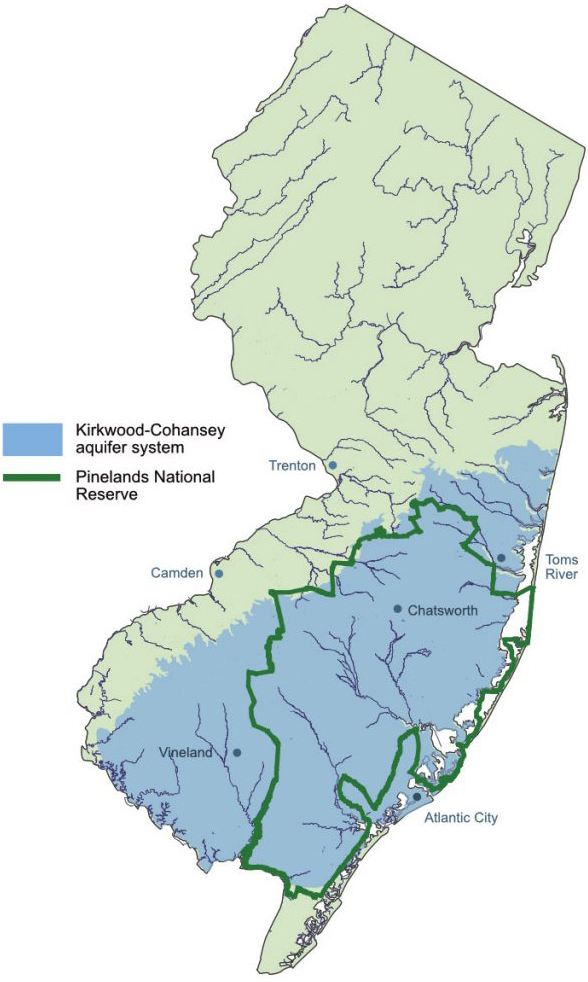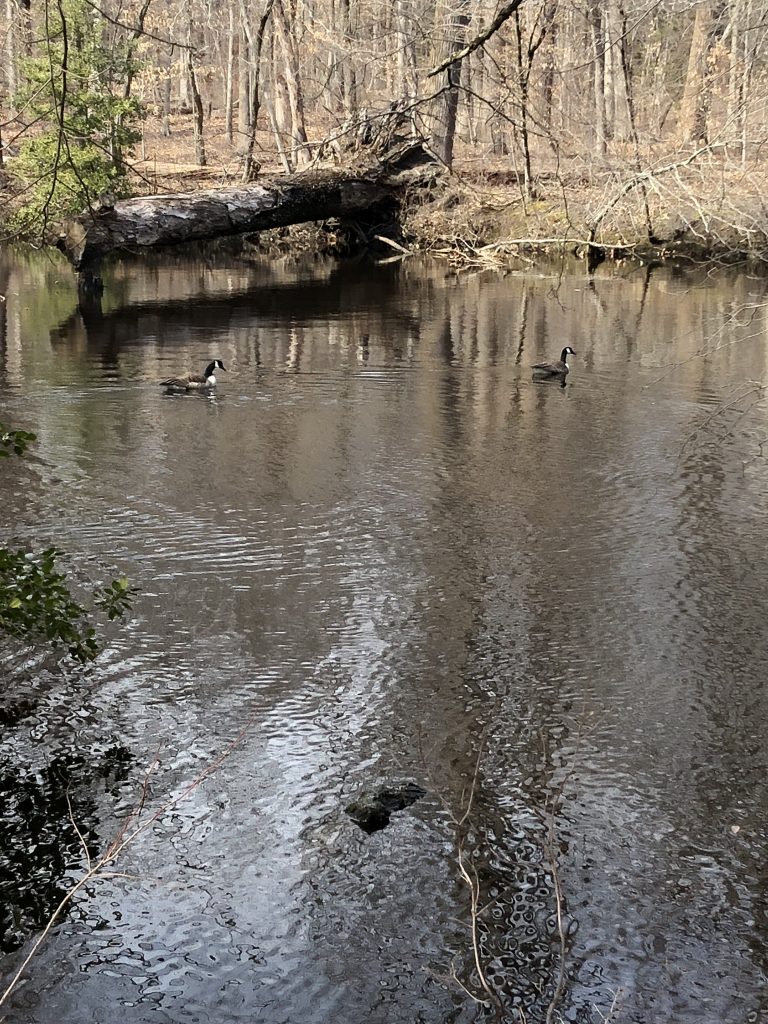I don’t want to lose Camp Dark Waters and the Pine Barrens altogether, but it looks that way! Because Camp Dark Waters is on the edge of the New Jersey Pine Barrens. The Pine Barrens soil is a sandy, poor soil that allows sturdy plants like the pitch pines, cedar, and the blackjack oak to grow. Underneath the soil lies a huge acquirer called the Kirkwood-Cohansey Aquifer. It ranges over 3,000 square miles and has 17 trillion gallons of water. Unlike some aquifers, the Kirkwood-Cohansey is not surrounded by rock but is caught between layers of sand and gravel. The sands soak up the rainwater are the cause of the many streams, creeks, rivers and the wetlands in the Pine Barrens.

The Pinelands Ecoregion once ran from Delaware to Cape Cod Massachusetts. As developments grew, the water and lands were compromised. The New Jersey Pinelands National Reserve was created in 1978 to allow development around the edges of the Pine Barrens to protect this last standing part of Atlantic Coastal Pine Barrens lands.
The Garden State Canoeing (1992 Seneca Press) describes part of how the Pine Barrens became protected: “The Mullica River drains the heart of the Pine Barrens, about 100,000 acres of which now lie protected as the Wharton State Forest. Back in the 1870’s Joseph Wharton bought up all those supposedly worthless acres, recognizing the value of the underlying aquifer as a future water supply for Philadelphia. But a parochial NJ legislature passed a law quashing this potentially lucrative plan. While Wharton ultimately managed to find agricultural value in the land, his heirs saw fit to sell the

Currently, the Pine Barrens are threatened. Climate change has impacted the precipitation patterns; the governor is planning to run the gas lines through the Pine Barrens; the ecological integrity of the groundwater is at risk due to the runoff from agriculture and septic systems. There is also an increased demand for drinking water as the population has increased. The Department of Environment Protection (DEP) says that the state has sufficient drinking water for the future. However, Pinelands Commissions Director, Larry Liggett feels that the DEP has over allocated it and that the end result will be devastation for the Pine Barrens. If the water is used at this rate, it will create a situation where the lower water level in the wetlands will kill off plant, tree, animal and insect life. This use of water and the lower level in the watershed has led to the infiltration of saltwater into freshwater. The Pinelands Commission has sent proposals and new rules to the governor’s office for review, but so far there has been no movement and no new plan for the future. The Pine Barrens is the largest and relatively undeveloped “wilderness” that is located in the Washington-to-Boston megalopolis. I hope we don’t lose the amazing resources and the intricate ecology that is the New Jersey Pine Barrens. It would be devastating for the ecosystem of the East Coast. Until next time, when I will talk about the uniqueness of the Pine Barrens as well as the important use of “Cotoxen Cabin” in the research of the Pine Barrens by the architect who designed the cabin.